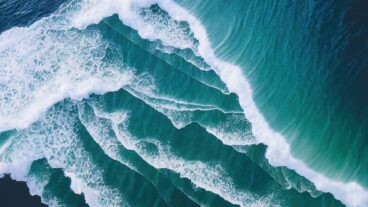Before the devastating 2004 Boxing Day tsunami hit Asia, Beverly Goodman had an impossible time explaining her research to peers. Since the catastrophic tidal wave struck, she has been able to remove about 10 slides from her presentation.
She makes no light of the event, but was surprised to see how overnight the world had educated itself about this unique force of nature, which was then, and remains today, an important focal point of her research.
Goodman, 33, is an underwater archeologist who has invented new underwater coring methods to better understand climatic events at sea and in lakes. Her research tracks historical changes in the environment – such as tsunamis – and how these changes have impacted people and coastlines.
Her research may give science new clues about the coastal environment in the context of global warming. Are the seas rising? Could a melting glacier break off and create a tsunami? Will storms and floods increase as the earth warms?
Goodman’s questions might be more local in nature, but her work has global significance by adding to the information science holds about earth events and climate change.
Sifting through broken shells and sediment from coring samples, she has determined that at least three ancient tsunamis struck Israel’s port of Caesarea in the past. Concurrently, she also works in the Red Sea’s Gulf of Aqaba to determine how local flood cycles and sea levels have changed over time.
Goodman is one of a dozen researchers around the world exploring a new field known roughly as geo-archeology, she says, but even Goodman stumbles a bit coming up with a precise definition.
A few months ago, National Geographic was in tow filming Goodman’s underwater coring methods, which she developed with Prof. Eduard Reinhardt, an affiliate of the University of Haifa, where Goodman recently completed her PhD.
While methods to core the ocean floor abound, there are few techniques suitable for collecting cores in sandy upper shelf environments, such as those found at Caesarea. In some ways it is easier to take coring samples at deep depths, and more difficult in shallow regions, explains Goodman.
“When cores are collected, we lower a tube and, using the force of gravity, run weights that slam the pipe into the ground. But the upper shelf we are working on typically consists of sand. It is reworked sand from the Nile. If you try to use the gravity core it bounces off the sand. The nature of the material changes,” she explains.
To collect the core from the shallow depths Goodman and her team refined a new technique using a pneumatic hammer attached by an adapter to an aluminum pipe, and balanced by way of lines attached to counter-floats.
“Prior to this there was no method to core underwater at these depths,” she says. “No one did it really until now.”
The layers are inspected above shore. Each line, read like the ring of a tree, can include sediment from the sea as well as layers of broken shells, which may point to a force of nature hitting the shores, such as a tsunami.
“The coastal area is an area of change. Of movement,” she says. “It is an interface with a dramatic expression of environmental change worldwide.”
Goodman knows about water and the forces of nature. She grew up on the shores of Lake Superior at Whitefish Bay, 17 miles from where the legendary freighter, the Edmund Fitzgerald, floundered and then sank.
“As much as I love the shipwrecks of the Great Lakes, Israel is different,” she says. “Israel has been a crossroads forever. The time scale is so long. We can get a historical and pre-historical perspective from a long view, while being connected to well-known historical events.”
Up until now, Goodman explains, people who were studying climatic events and changes at sea relied on offshore deposits. “Even in research from the Indian Ocean, all of it involves transects that stop at the water line,” says Goodman. “This is the extent of the records.”
Goodman’s interest to go deeper by merging geology and archeology underwater was a natural extension of her love of science, human cultures and nautical history.
When she goes out into the field Goodman straps on her diving gear, because her dustless “dig” happens underwater, either in the Mediterranean, or the Red Sea. She is currently completing her post-doctoral research with Hebrew University, but works out of the Eilat-based Interuniversity Institute for Marine Sciences, known as the IUI.
The IUI is open to all Israeli marine researchers, and also those from abroad. The center is bustling with research activity, and besides her scientific endeavors, Goodman plans on turning her home-base marine station into a world-class research hub, suitable for hosting marine scientists from around the world.
The center already has a meaningful partnership with Jordanian marine researchers, she says.
Marine research and its effects on climate change run in the family apparently. Goodman’s husband Dan Tschernov, who is a director at the IUI, researches with Prof. Moaz Fine from Bar Ilan University on the effects of ocean acidification.
The two are developing a technique that looks at coral bleaching over the last 800,000 years.
It is research that documents marine acidification, among other things. “It is an interesting thing,” concludes Goodman, “Unlike debatable effects of climate change, theirs is not a question of why and how.”












